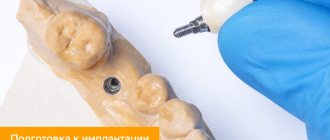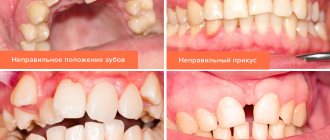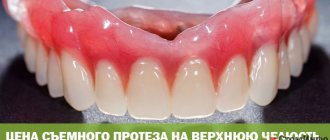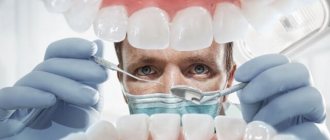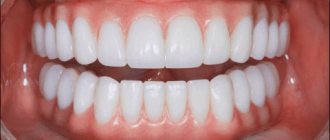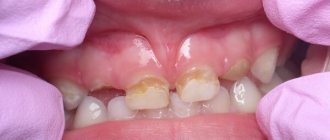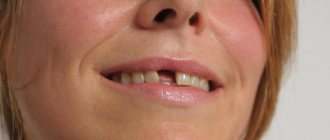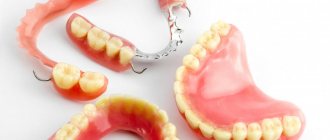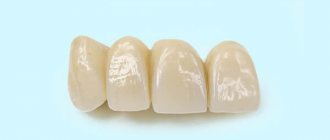Indications for tooth extraction
Extirpation is done when therapeutic treatment is impossible or before prosthetics. It can be planned or emergency. It is carried out using a simple or complex method. In the first case, the dental unit is removed from the socket using forceps, and in the second, dissection of the gums, alveolar bone, and sawing of the roots into fragments may be required.
Indications for emergency surgery:
- the presence of purulent inflammation, fistula, cyst;
- acute pain that is not relieved by medication;
- fracture of the crown, root.
Planned extraction is done if:
- advanced caries, if the area of the carious cavity of the crown is more than 70 percent, the pathology has spread to the root part;
- pulpitis in a complex root system, when it is impossible to properly clean the canals (usually in a figure eight);
- periodontitis with stage 3 or 4 mobility;
- third molars that interfere with neighboring ones cause changes in bite, facial asymmetry, neurological pain, pericoronitis;
- supernumerary, dystopic, impacted teeth, which cause various disorders in the dental system;
- orthodontic indications for prosthetics, installation of braces.
Experienced dentists always strive to preserve the integrity of the dentition, so radical measures are usually taken in the absence of a positive result of therapeutic treatment. After the procedure and recovery period, acute pain goes away, but chewing function worsens when removing molars or aesthetics when extracting incisors or canines.
Varieties
A tooth in the jaw can change its position. The above factors contribute to this. Based on how it has shifted and in what plane, the following types of pathology are distinguished:
- the chewing tooth can rotate around a vertical axis;
- inclination of the tooth in the buccal, palatal and lingual direction;
- vertical movement, also called elongation of both upper and lower teeth;
- distal displacement of teeth;
- mesial displacement;
- combined offset.
At the first signs of the formation of an anomaly, it is advisable to immediately visit a qualified orthodontist to normalize the condition of the dentition. It is important to remember that changes in the position and appearance of teeth occur very quickly in young children, and somewhat slower in adolescents. Therefore, you should not hesitate and immediately seek help.
Anesthesia for tooth extraction
There are several types of pain relief:
- local anesthetics that are injected into the gums;
- drugs for general anesthesia injected into a vein;
- inhalation anesthesia;
- nitrous oxide sedation.
The choice of method depends on what kind of operation is being performed: simple or complex. Removing the front teeth is considered the easiest. They have one root and are easily dislocated with forceps. For pain relief, a simple “freezing” with a local anesthetic is sufficient.
Removing lower wisdom teeth is the most difficult procedure, especially if there are abnormalities in growth and location. It will require cutting the gums, cutting off part of the bone, sawing and step-by-step removal of root fragments. The operation can last more than 1 hour, so it is often performed under anesthesia.
Sedation with nitrous oxide does not exclude local anesthesia. It relaxes well, puts the patient into a state of half-asleep, and reduces fear. Often used in pediatric dentistry to remove baby teeth.
Drugs injected into a vein completely turn off consciousness for a certain period of time. The duration of anesthesia is adjusted by the dosage of the medication.
Inhalation anesthesia allows you to control the dose of the drug directly during the procedure. This ensures high-quality and safe general anesthesia and minimizes the risk of side effects.
Changes in the mouth while wearing braces
Installing a brace system to correct a bite or straighten teeth is almost always accompanied by an adaptation period. In some patients it can be several days, in others - a couple of weeks, it depends on the individual characteristics of the body. During the adaptation period, elements of the orthodontic structure can rub the mucous membrane, lead to the formation of ulcers on the inside of the lips and cheeks, and cause discomfort. Patients are warned about possible temporary disturbances in diction and difficulties in pronouncing certain sounds.
But practice shows that many are not prepared for the loosening of their teeth while wearing braces. If a tooth is loose under braces, there is a fear of losing it. Is it really possible to lose loose teeth on which braces are attached? In most cases, unusual mobility is normal and, as long as your dentist recommends it, will not lead to tooth loss.
Stages of the procedure
Simple extirpation is carried out using forceps, consisting of cheeks, a handle, and a lock. It is performed if the coronal part is well preserved and there are no various complications. Incisors and canines on the upper jaw are removed with straight forceps, on the lower jaw - curved at an angle of 90 degrees. S-shaped instruments are used to extract premolars and molars.
Removing an upper wisdom tooth is easier than on the lower jaw, since it has an even, small root, so a simple operation is performed if there are no complications. The lower jaw bone is denser and more massive, and the root part of the figure eight is complex.
A simple extraction consists of several steps:
- local anesthesia;
- antiseptic treatment;
- application of forceps followed by advancement of the cheeks under the gums and fixation;
- rocking, dislocation and extraction of a dental unit from the socket.
Complex extirpation requires the use of several different instruments, takes a longer time, injures nearby tissues, is dangerous for complications, and the rehabilitation process lasts longer. Pain relief during tooth extraction, especially eights, can be general. The surgeon uses a scalpel or laser, drill, elevator, excavator, and other instruments.
Step-by-step complex removal:
- local or general anesthesia;
- antiseptic treatment;
- dissection of the gums, separation of the flap from dental and bone tissues;
- if necessary, drilling or cutting off part of the bone, dividing the root into several fragments;
- extraction of a dental unit in whole or in parts;
- bleeding stop;
- application of antibacterial and anti-inflammatory drugs;
- suturing the gum.
To stitch soft tissues, self-absorbing or non-absorbable threads are used, which are removed after 7-10 days.
The result of dental prosthetics with ceramic crowns
Ceramic crowns are made of E.max ceramics, which has excellent aesthetic properties. In the hands of an experienced master, ceramics turns into completely natural teeth, as it has a natural shine and translucency.
In the photographs, the letter “k” indicates ceramic crowns on the teeth:
Just 2 months after visiting an orthopedic dentist, the girl received a natural and very beautiful smile.
Girls should be beautiful and happy, therefore, if the smile is not naturally perfect, Dial-Dent specialists will come to the rescue and help restore harmony.
The cost of the orthopedic stage is 425,000 rubles. The cost of treatment with WIN braces is 330,000 rubles. (All prices are given at the time of treatment, check with the administrator for current prices).
Dial-Dent specialists who created this smile:
- Orthopedic dentist A.S. Ivankov – ceramic dental prosthetics.
- Orthodontist O.N. Selector – orthodontic preparation for prosthetics.
- Dental assistants – S. Shchelkova, M. Erkimbekova.
See other examples of the work of Dial-Dent specialists here.
Make an appointment for a consultation by phone +7-499-110-18-04 or through the form on the website. You can ask questions about dental prosthetics to the chief doctor of the clinic, Sergei Vladimirovich Tsukor, at
Possible complications
When using an elevator, an adjacent molar or premolar may be displaced or even broken. In the upper jaw, it is possible to push a fragment into the maxillary sinus. Fractures of the lower jaw are very rare.
Immediately after surgery, swelling occurs, and after the anesthetic wears off, pain occurs. Such phenomena disappear within one or several days, depending on the complexity of the procedure performed. Temporary numbness of soft tissues in the operated area, increased temperature, and bleeding are possible.
Pus in the hole after tooth extraction appears due to alveolitis. When a blood clot, which protects against the entry of bacteria and food, falls out of the socket, the pain intensifies and inflammation develops. In this case, you need to contact the doctor who performed the operation.
Destruction of bone structures
The supporting alveolar bone contains a spongy substance that absorbs the chewing load. If at least one tooth is missing, this load changes. Remodeling begins in the bone: its structure, shape, and volume change. In order for it to remain dense and not deform, it needs a constant load that will stimulate it. With edentia, the bone becomes less dense. The alveolar process (or the alveolar part in edentulous lower dentition) becomes narrower. The next stage of destruction is when the bone gradually loses height. Without prosthetics, it decreases by 4 mm in just a year. The width is also reduced - by 25% of the original per year. This process does not stop: if implantation is not performed, destruction will continue. Installing a bridge can only partially solve this problem. This design transmits the chewing load, which is absorbed by the surface layer of bone tissue. The deeper layers remain without constant stimulation. Because of this, blood supply deteriorates and the volume of bone tissue decreases.
When even one tooth is lost, the alveolar bone is rebuilt and resorbed. In place of the hole, a narrow ridge is formed, running along its center. The formation of this ridge complicates prosthetics. When using a removable denture, it rests on the ridge and injures the overlying gum tissue.
Another consequence of bone loss is an increased risk of injury. It especially increases for the lower jaw. With a significant decrease in the volume of bone tissue, there is a possibility of a fracture in this area, even with minor injuries.
It is not only the alveolar bone that suffers from the lack of chewing load. Over time, destruction begins to occur in the main jaw bone. This process occurs faster in the posterior parts of the lower jaw, where destruction of up to 80% of the bone tissue volume is possible in the socket area.
You have questions?
We will call you back within 30 seconds
+7
Bone resorption changes the characteristics of the dental system:
- oblique ridges are formed on the jaw in the sublingual area. May be accompanied by the formation of a local bedsore;
- changing the shape of the chin. In its anterior part there are two tubercles, which can protrude forward during the destruction of bone tissue;
- the muscles are attached near the top of the ridge, which can provoke pain and discomfort;
- thinning of the mucous membrane, causing discomfort even when eating or performing hygiene procedures;
- formation of functional bedsores.
Care instructions
Before the socket is tightened, you should not overheat the body, drink or eat hot or cold drinks, food, or chew on the operated side. You should not smoke, as nicotine constricts blood vessels and impairs wound healing. It is forbidden to lick a blood clot from the socket.
Antibiotics are prescribed for tooth extraction if the procedure was complicated. They are necessary to prevent tissue infection and the development of inflammatory processes. For the same reason, it is recommended to rinse your mouth with antiseptics. In this case, there is no need to rinse intensively, since it is possible to wash out the blood clot from the socket. Analgesics can be used to relieve pain.
Proper care will protect against loose teeth
One of the causes of loose teeth is periodontal tissue disease. To prevent their development, you need to properly care for your mouth while wearing an orthodontic appliance.
Proper care involves daily brushing of teeth with 3-4 types of brushes - regular, special orthodontic with a V-shaped bristle, single-tuft and brush-brush. These devices are used alternately, gradually removing all dirt and plaque. After brushing your teeth, you need to clean the interdental spaces using superfloss - a special orthodontic dental floss. At the final stage, the oral cavity and the braces system are cleaned using an irrigator. This device directs a powerful stream of water, which removes dirt from interdental spaces, periodontal pockets and other difficult areas. To care for braces, it is important to purchase irrigators with special orthodontic attachments.
Careful and regular oral care will prevent pathological loosening of teeth under braces and avoid their loss.
FAQ
• Is it painful to remove a tooth?
Painless tooth extraction using local anesthetics is carried out by absolutely all dental clinics. But if “freezing” is not enough, then it is better to go to a private clinic that provides all types of pain relief.
• How do you know when a tooth needs to be removed?
If it is very loose or the crown is completely destroyed, then most likely it will be removed. In other cases, accurate diagnosis is necessary.
• Is it possible to have a tooth removed if you have a cold?
Surgical intervention is unacceptable in the presence of an acute infection, including acute respiratory infections or influenza. This is due to the high probability of infection of injured tissues.
• Is it possible to remove a tooth if you have sinusitis?
The operation is not performed during exacerbation of the disease.
What to do if your teeth have moved
Almost all displacements can be corrected, so it is important to promptly seek help from a dentist or orthodontist. The listed pathologies can be treated at any age, but it is better to worry about the problem as early as possible. The less time has passed since the change in the primary occlusion, the more successful the results will be.
At the same time, many experts recommend waiting for the eruption of “eights” or wisdom teeth. Braces, aligners and other orthodontic products often require their removal before treatment, so they most often undergo extraction both after eruption and during the retention stage according to the doctor’s indications.
Correction of the displacement of dental elements can be carried out in the following ways:
- Rotation - the specialist performs available manipulations to rotate the tooth around the central part of its stability.
- Intrusion is the deepening of a protruding element in the jaw row.
- Extrusion is the pulling out of a tooth embedded in the periodontal tissue and located below the remaining bone elements.
- Moving - a tooth is returned to its place if it has moved to the sides, forward or backward. Typically practiced on central line dental units.
- Tilt is a technique that combines rotation with translation.
The listed methods for correcting anomalies are used if there are problems with the maxillofacial apparatus or bite. If the pathological movement is provoked by any diseases, for example, with periodontitis, teeth sometimes shift in adults, it is important to begin treatment by eliminating the identified ailments. Only after this is the bite corrected using orthodontic structures or surgical methods if there are serious indications.
General overview
Features of the pathology of displacement of the midline of teeth have long been of interest not only to dentists, but also to patients. At the very least, it is important to familiarize yourself with the norms for passing the center in a person.
If we give an aesthetic assessment, then in the absence of an anomaly, a person should have symmetry of the dentition and the coincidence of the median line of the face with the interincisal midlines (but this is not a pattern).
If the median line is inclined, then this always causes a violation of symmetry. The pathology takes on a pronounced character if it is accompanied by a shift in the midline to one side of the smile, which in the normal state should be in the center and in harmony with the rows of teeth.
It is no secret that, first of all, others pay attention to a person’s face. Any violation in the proportions of the face and upper jaw row negatively affects the beauty of the smile.
It is possible to note the ideal proportionality and harmony of the face only if there are strictly vertical straight teeth.
If the considered proportions of the face and dentition do not coincide, during the correction process the center of the jaw row should be located perpendicular to the interpupillary line.
Important! The midline of the teeth always acts as a guide for orthopedic dentists in the process of drawing up an aesthetic correction plan.
How to correct a crooked upper jaw and which method is most effective.
Come here to find out which method is the most gentle for correcting a small lower jaw.
At this address https://orto-info.ru/zubocheliustnye-anomalii/chelyustey/rashirnie.html we will consider ways to expand the dentition.
Treatment tactics
There are five methods for correcting the disorder in question:
- Expansion of the tooth area with braces.
- Removal of a tooth.
- The use of elastic traction.
- Surgical method.
- Prosthetics and restoration.
Let's consider each of the treatment methods in detail.
Expansion of teeth with braces
Most often, the most complex displacement is expressed in the discrepancy between the center of the teeth of the upper and movable jaw.
In this case, the doctor’s task is to ensure that not only the center of the two rows coincides, but also that the jaw midline completely matches the line passing through the center of the face.
If there is a shortage of space in the jaw arches and there is an asymmetrical displacement, braces are used to expand the problem area on the top row on the right side.
At the same time, on a mobile jaw, the correction by the system occurs in the opposite way - the problem area on the left expands. According to this principle, treatment with a brace system will be successful and the depth of overlap of teeth in the frontal zone will be noticeably normalized.
Remarkable! In the treatment of the anomaly in question, classical brace designs are capable of showing good results.
The video presents tactics for treating anomalies using combined braces.
Removal of a tooth
When the midline of one of the arches has a significant shift, it means that the center has shifted due to the long absence of a tooth after its removal, say, the 4th unit on the left.
In this case, the correction tactics are based on creating space in the side to which it is planned to shift the center. To do this, the doctor performs an extraction of the quad on the right, and a displacement is planned in this direction.
Application of elastic rods
Elastic cords are used in the treatment of dental center disorders as auxiliary elements. They cannot eliminate the problem on their own and be the basis for correction.
A correction plan based solely on orthodontic rubber bands will not bring the desired result.
Modern methods for correcting shortening of the dentition and the expected result.
This publication contains all the most important information about tooth intussusception.
Here https://orto-info.ru/zubocheliustnye-anomalii/ryadov/chto-skeletnaya-opora.html find out what absolute skeletal support is.
Surgical intervention
Surgical intervention to eliminate displacement (doctors call the rotation method) is one of the best options for effective treatment of pronounced deviations from the norm. The essence of the technique is to shift the upper jaw relative to the skull.
Features of this type:
- Making an incision in bone tissue.
- Changing the position of the upper jaw under mechanical pressure.
This type of surgical intervention helps to radically change the situation with the position of the teeth and restore the ideal center.
Prosthetics and restoration
Often, among conservative methods of treating midline displacement, experts consider aesthetic correction to be the optimal choice: prosthetics with crowns, restoration with veneers, or grinding of cutting areas followed by restoration of the integrity of the tooth with a composite.
The restoration of central incisors with wide diastemas using the method of building up the walls of the teeth is widely used. For these purposes, a polymer that is optimal for the shade of teeth is selected.
The main task of the dentist in the process of this manipulation is to bring the shape of each problem unit as close as possible to the natural one.
Classification and reasons for formation
The center of the teeth on one or two jaws at the same time may shift for the following reasons:
- disruption of the process of replacing temporary teeth with permanent ones;
- late eruption;
- TMJ diseases;
- dystopic fangs;
- lack of space in the jaw arch;
- disturbances in the development of one or both jaws;
- abnormalities in tooth size;
- traumatic injuries;
- heredity.
Let's consider an example of a clinical picture with a slight displacement.
A client of a dental clinic has a violation of the replacement of the primary canine with a permanent element on the left in the upper dentition. For this reason, the center line shifted to an empty space - to the left.
On the mobile jaw, on the contrary, there was a delay in changing the canine on the right side. Accordingly, the interincisal straight line is shifted to the place of the missing tooth to the right.
If there is a slight deficiency in the dentition, its expansion in the area of the unerupted unit will lead to lengthening of the jaw arch and a slight shift of the center in the opposite direction. But in orthodontic practice, more complex displacements of the “center of the teeth” are encountered. The optimal methods of their treatment will be discussed below.
Experts classify the anomaly into two types:
- True offset .
Orthodontists also call this type deviation or corpus displacement. The problem is characterized by a discrepancy between the upper point of the interdental papilla and the contact point of the central incisors with the approximate vertical line. This clinical picture mostly occurs due to the absence of a complete row element in the masticatory or frontal zone. In the absence of one of the frontal units, the displacement takes on a pronounced character. - False displacement is a violation of incisal angulation.
It occurs against the background of dysfunction of the mesial-distal inclination of the longitudinal axes of the anterior teeth located in the middle of the upper row. The peculiarity of the anomaly is that the vertical straight line passing through the center of the border region of the middle part of the lip coincides with the gingival papilla, while the interdental contact points are deviated from them.
